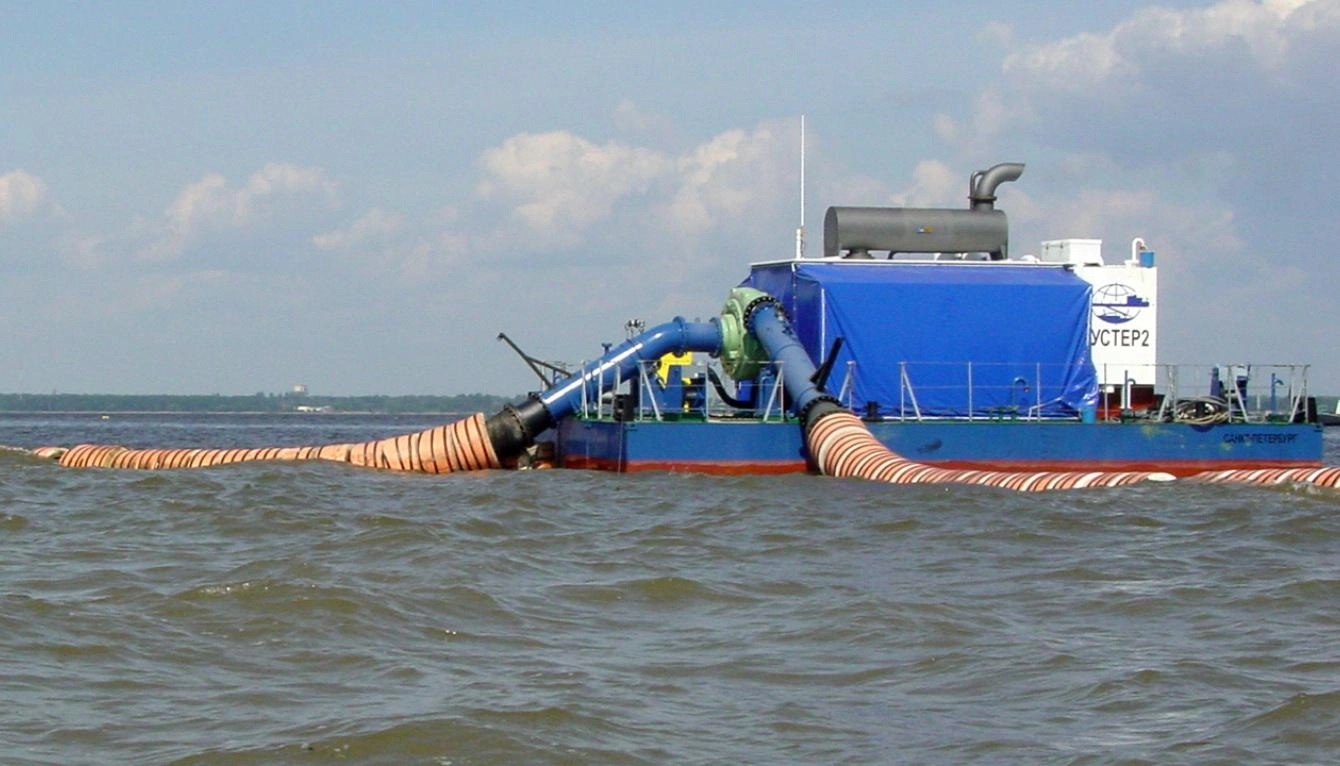Advantages of Using Booster Stations in Series with CSDs
Cutter suction dredgers (CSDs) are vital for various dredging operations, including land reclamation, mining, and construction projects. To enhance the efficiency and range of these operations, booster stations are often deployed in series with CSDs. Booster stations, specifically engineered to work in conjunction with CSDs, share identical dredge pump and drive systems, providing significant advantages while also presenting certain challenges. This article delves into the benefits and drawbacks of using booster stations in series with cutter suction dredgers.
- Extended Pumping Distance:
- Enhanced Range: One of the primary advantages of integrating booster stations with CSDs is the ability to extend the pumping distance. This is crucial for projects that require the transportation of dredged material over long distances, such as large-scale land reclamation or beach nourishment projects.
- Efficient Material Transport: By adding booster stations, the dredged material can be transported more efficiently and over greater distances without losing pressure or flow rate.
- Increased Productivity:
- Higher Throughput: Booster stations help maintain a high throughput of dredged material, ensuring that operations can continue without interruptions due to pressure drops or insufficient flow.
- Reduced Downtime: With consistent pressure and flow, there is less risk of downtime caused by equipment strain or blockages, leading to more efficient project completion.
- Flexibility in Operations:
- Adaptable Configurations: Booster stations can be added or removed based on the specific needs of a project. This flexibility allows for customized solutions that can be adapted to different dredging environments and requirements.
- Scalability: Projects of varying sizes can benefit from the scalability of booster stations, allowing operators to scale their pumping capacity up or down as needed.
- Optimized Energy Use:
- Energy Efficiency: When booster stations are used in series with CSDs, they can help optimize energy consumption by ensuring that pumps operate within their optimal performance range, reducing wear and tear and extending the life of the equipment.
- Enhanced Reliability:
- Redundancy: The use of booster stations adds an element of redundancy to the system. If one station encounters an issue, others can continue to operate, minimizing the risk of total system failure.
- Improved Maintenance: Identical pump and drive systems simplify maintenance procedures, as spare parts and expertise are consistent across all units.
Disadvantages of Using Booster Stations in Series with CSDs
- Increased Initial Investment:
- High Capital Costs: The addition of booster stations requires a significant initial investment. The cost of purchasing, installing, and commissioning the booster stations can be substantial, particularly for large-scale projects.
- Ongoing Expenses: Beyond the initial setup, there are ongoing costs associated with operating and maintaining multiple booster stations.
- Complexity in Management:
- Operational Complexity: Managing a series of booster stations can add complexity to the overall operation. Coordination between the CSD and booster stations is essential to ensure smooth operation and to prevent issues such as pressure surges or flow inconsistencies.
- Skilled Personnel: The complexity of the system requires skilled personnel for operation and maintenance, which can increase labor costs and necessitate additional training.
- Maintenance Challenges:
- Regular Maintenance: While having identical systems can simplify maintenance, it also means that each booster station requires regular attention. This can be time-consuming and may necessitate shutting down parts of the system periodically.
- Parts and Repairs: Keeping a stock of spare parts for multiple booster stations can be costly, and coordinating repairs across several units can be challenging.
- Environmental Considerations:
- Environmental Impact: The extended use of booster stations can have environmental impacts, particularly in sensitive areas. The noise, emissions, and potential for spills or leaks need to be managed carefully.
- Permitting and Regulations: Additional booster stations may require more extensive permitting and regulatory compliance, adding to the administrative burden of the project.
Conclusion
The integration of booster stations in series with cutter suction dredgers offers significant advantages in terms of extended pumping distance, increased productivity, operational flexibility, energy efficiency, and enhanced reliability. However, these benefits come with challenges, including higher initial investment, increased operational complexity, maintenance demands, and environmental considerations.
For operators and project managers, the decision to use booster stations should be based on a thorough analysis of the project requirements, budget, and environmental impact. By carefully weighing the advantages and disadvantages, it is possible to optimize dredging operations and achieve successful project outcomes.
